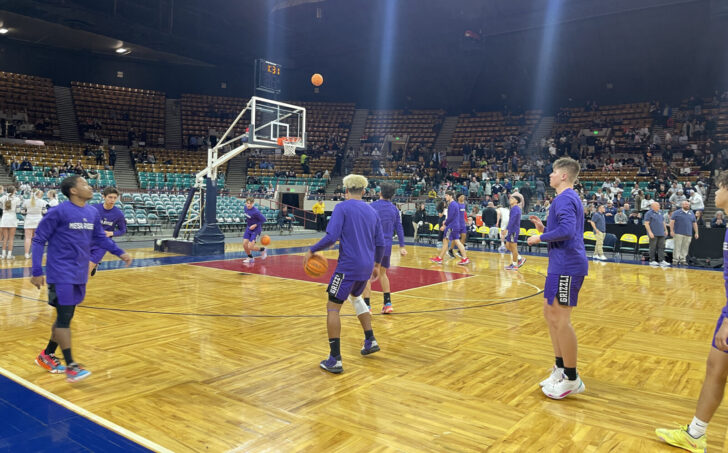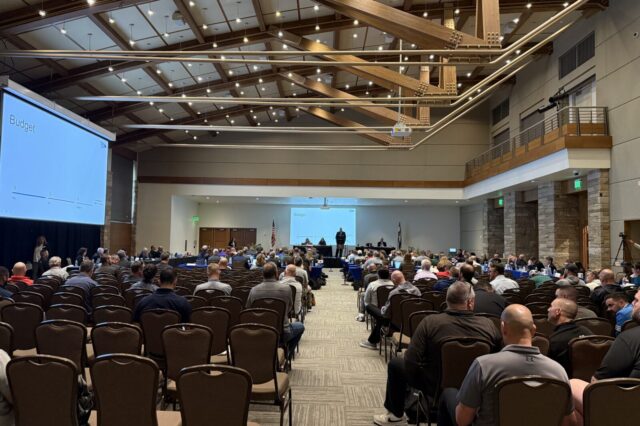Every high school basketball fan has heard it – or maybe even thought it.
The score is close enough for a high school basketball game to be interesting, but spread just far enough apart that a stall could potentially be advantageous to the team with the lead. So, the point guard holds the ball just inside half court. If the defender approaches, prompting the referee to begin his five-second count, the ball is thrown to the wing and the process is repeated. Or, perhaps, the fact that there’s no rush causes the defense to resort to another, most times more dire option – fouling. And from there, a game that has two minutes left on the clock can take all night.
“We need a shot clock!” screams a parent.
It’s not a bad idea per se. It works for the NBA. It works for college basketball. The idea is that holding the ball is bad for both the fans and the flow, that basketball is meant to be played, not delayed. Inserting a shot clock into the equation eliminates the stall and improves the game.
Or does it?
After Wednesday’s vote by the CHSAA Legislative Council which killed the implementation of a shot clock (for now), we’ll have to wait to find out.
There’s one other question, too: What does fixing the problem truly cost?
In an era where cost is seemingly no object – whether it’s the price of groceries, the price of a kid’s summer sports camp, or the price of new warm ups for the varsity – there are plenty who don’t really care about the dollars, only the sense. Shot clocks aren’t free, but those who are voicing the complaints often don’t care, and even more often don’t have to pay. Johnny will only be in high school for so long, high school hoops needs a shot clock and that’s an expense the school will pickup anyway. Sounds easy enough if you’re not the one writing the check.
In terms of “cons,” cost is realistically the biggest one. A quick stroll around the internet reveals that if any given gym starts without a shot clock, essentially starting from scratch, getting an acceptable, operational and installable shot clock will cost somewhere north of $5,000 – and that’s probably on the low end. Just one of many examples, BSN Sports offers up a fairly standard set up that comes in at just over $6,000. That’s not to say there aren’t cheaper options, but it’s not black and white; it’s not just the “clock” a school must purchase. There’s either hard wiring or wireless controls, there’s the possibility of backboard lights, the equipment that nobody sees and of course installation.
And then there’s the job (cost?) of running one. That responsibility could fall on the referees, assuming the technology is there. Or, it could be more manual, meaning someone sitting at the scorers desk will have to do it. Maybe that’s the same person who runs the scoreboard or maybe it’s an entirely different persons – all factors to account for when assessing the true big picture.
“Free” – when it comes to the operation of a shot clock for every high school basketball game in the state – is difficult to define, and if one assumes that it costs “something,” that’s a cost that never goes away; it happens every game, every season, for as long as the gym hosts high school hoops.
The CHSAA basketball committee meets next week and the shot clock could again be on the agenda for April’s Legislative Council meeting. But as the committee again weighs the implementation of a shot clock, perhaps they should try to decide of the “results” are worth the cost, whatever it might be. In other words, even if the shot clock is free (hypothetically, of course), will the game be considerably better? Is it actually important?
The advantages: Yes, stalls would be tougher to pull off. Yes, for kids good enough to play at the next level, the practice of playing with a shot clock at the prep level can only help. Yes, the end of games could either be more competitive or less tedius to watch.
No doubt, all good things.
But based on a MaxPreps study from 2014, when shot clocks started trickling into high school play, the game in states that have a shot clock versus states that don’t, isn’t all that different.
Scoring is relatively the same. Margin of victory is relatively the same.
Not found in the study? Better teams beat lesser teams. The best point guards don’t create turnovers; struggling guards do. And based on percentage, very few kids go into play at the next level.
The shot clock isn’t a bad concept. But according to those with a vote in Colorado, it’s not worth the cost.
Not yet.



